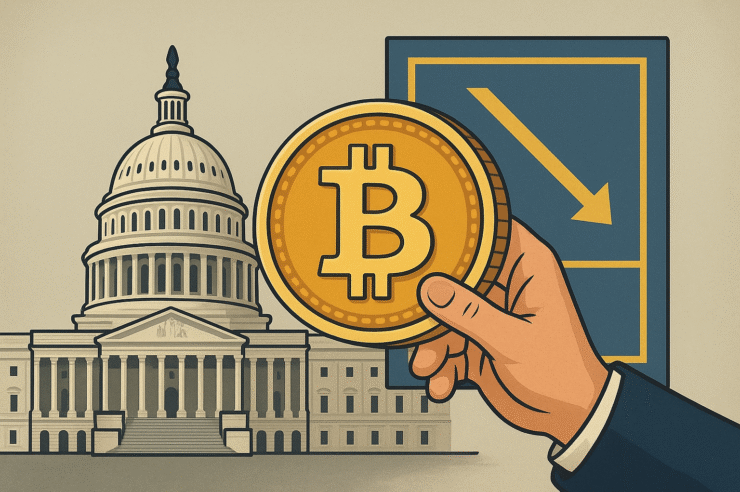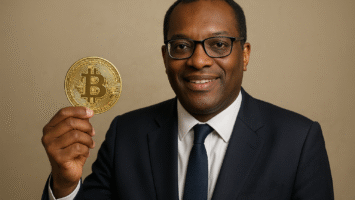Introduction
The conversation around Bitcoin has always been global in nature, but recent discussions in Washington, D.C., signal a shift in how the United States may approach digital assets. Industry leaders, policymakers, and advocates recently gathered to debate the idea of creating a Strategic Bitcoin Reserve, a bold proposal that would see the U.S. government accumulate up to one million bitcoins over a five-year period. This initiative, referred to as the Bitcoin Strategic Reserve Act, has generated significant interest among investors, economists, and the wider cryptocurrency community. The central idea is not simply about holding Bitcoin but about transforming the way the U.S. approaches financial resilience, national reserves, and monetary policy.
Origins Of The Strategic Bitcoin Reserve Concept
The idea of governments holding Bitcoin is not entirely new. Countries such as El Salvador have already embraced the asset as part of their national financial strategy, albeit on a smaller scale. However, the U.S. proposal is different in its scale and scope. The discussions in Washington revolve around institutionalizing Bitcoin as a strategic reserve asset, similar in spirit to how gold has been treated in the past. The concept aims to ensure that the U.S. remains at the forefront of financial innovation while also safeguarding against potential shifts in global monetary power.
Bitcoin has long been described as digital gold due to its limited supply, decentralized nature, and resistance to inflationary monetary policies. By building a strategic reserve, the U.S. would be acknowledging Bitcoin as a form of financial protection, not just a speculative asset. This is particularly important in an era of economic uncertainty, rising debt levels, and questions about the long-term dominance of the U.S. dollar.
Details Of The Proposal
At the core of the discussions is the proposal to accumulate one million bitcoins within five years. Given that the total supply of Bitcoin is capped at 21 million, this amount would represent almost 5% of all bitcoins that will ever exist. The acquisition would not occur through direct purchases in open markets alone but would be funded through multiple sources. These include:
- Seized digital assets from criminal cases and regulatory enforcement actions.
- Earnings from the Federal Reserve, redirected toward Bitcoin acquisition.
- Excess revenues from specific government programs and financial mechanisms.
The intention behind this funding structure is to avoid creating direct financial strain on taxpayers while also preventing excessive disruption in Bitcoin markets. Importantly, the act specifies that the government would not sell its Bitcoin holdings, thereby ensuring the reserve remains a long-term strategic asset.
Economic Rationale Behind The Reserve
The economic reasoning for the Strategic Bitcoin Reserve is rooted in diversification, security, and future-proofing the financial system. Just as gold has historically served as a hedge against currency devaluation and inflation, Bitcoin is increasingly being viewed in the same light. Its scarcity, coupled with global adoption, makes it an attractive alternative asset.
By holding Bitcoin, the U.S. would:
- Diversify national reserves beyond traditional assets like gold and foreign currencies.
- Hedge against inflation by holding a deflationary asset.
- Strengthen financial sovereignty by owning an asset not controlled by any foreign power or centralized institution.
- Enhance credibility in the global financial system by demonstrating forward-looking policy adoption.
The reserve could also act as a stabilizing force in times of global financial crises. If fiat currencies face devaluation, the Bitcoin reserve could bolster confidence in the U.S. economy, creating a backstop that aligns with digital-age realities.
Potential Challenges And Criticism
While the idea is ambitious, it is not without challenges. Critics argue that the proposal could lead to market distortions. Accumulating such a large amount of Bitcoin in a relatively short time frame could significantly impact prices, creating both volatility and scarcity. This could further fuel speculation and make Bitcoin less accessible for ordinary investors.
Another concern is regulatory uncertainty. Bitcoin operates within a global decentralized network, but its legal and regulatory status varies significantly across jurisdictions. Questions remain about how the U.S. would manage such a reserve within existing financial frameworks, and whether such an approach would encourage or discourage private-sector innovation.
Skeptics also raise the issue of security. Holding a large reserve of Bitcoin requires sophisticated custodial systems to protect against hacks, cyber threats, and internal mismanagement. Unlike gold, which can be stored in vaults, Bitcoin is digital and requires advanced cryptographic protections.
Geopolitical Implications
If the U.S. were to move forward with this plan, the geopolitical implications would be profound. A strategic reserve of one million bitcoins would signal to the world that the United States officially recognizes Bitcoin as a critical financial asset. This could accelerate global adoption, as other nations might feel compelled to build their own reserves to avoid being left behind.
Such a move could also impact the role of the U.S. dollar. While the dollar remains the world’s dominant reserve currency, the inclusion of Bitcoin in national reserves could shift perceptions of monetary strength. It would also potentially reduce reliance on foreign-held reserves, such as Chinese or European government bonds, creating a new dimension of economic independence.
Moreover, countries with strained relationships with the U.S. may see this as a challenge, spurring them to increase their own Bitcoin holdings. This could spark a global “Bitcoin race,” where governments compete to secure a finite digital resource.
Impact On Bitcoin Market Dynamics
The creation of a Strategic Bitcoin Reserve would inevitably impact the market. With about 72% of circulating Bitcoin already considered illiquid, meaning it has not moved in a long time, the available supply is relatively limited. A large government acquisition program would reduce circulating supply further, likely driving prices higher.
This could be a double-edged sword. On one hand, it would boost the wealth of current holders and reinforce Bitcoin’s position as a valuable asset. On the other hand, it could exacerbate volatility, making Bitcoin less practical for everyday use. Institutional investors might welcome the move, as it would bring legitimacy to the asset class, but retail participants may find entry points increasingly expensive.
Comparisons With Gold And Strategic Reserves
The comparison between Bitcoin and gold is inevitable. For decades, gold has served as a cornerstone of national reserves. However, gold is bulky, costly to transport, and its supply continues to grow through mining. Bitcoin, by contrast, is digital, portable, and finite. The proposal to hold a Bitcoin reserve mirrors the role gold has played in history but adapts it for the digital economy.
Just as the U.S. built vast gold reserves in the 20th century to establish its financial leadership, a Bitcoin reserve in the 21st century could serve a similar purpose. The difference lies in accessibility and transparency. Bitcoin reserves could be verified on the blockchain, offering a level of transparency not possible with physical gold holdings.
Long-Term Vision For Bitcoin In National Policy
The Strategic Bitcoin Reserve Act is not merely about accumulating digital currency. It represents a broader vision for integrating Bitcoin into national financial strategy. If successful, it could pave the way for additional policies that embrace blockchain technology, decentralized finance, and digital assets more broadly.
Future policies might include:
- Issuing Bitcoin-backed bonds.
- Using Bitcoin reserves to support central bank digital currencies (CBDCs).
- Collaborating with international partners to set global standards for digital asset reserves.
In this way, the proposal reflects not only a short-term plan but also a long-term shift toward recognizing Bitcoin as a permanent feature of the global financial landscape.
Conclusion
The discussion of a U.S. Strategic Bitcoin Reserve represents a landmark moment in the history of both Bitcoin and global finance. By proposing to accumulate up to one million bitcoins, the United States is exploring a path that could redefine the role of national reserves in the digital age. The plan highlights Bitcoin’s increasing acceptance as a legitimate and valuable asset, but it also raises important questions about market dynamics, regulation, and security.
If adopted, the Bitcoin Strategic Reserve Act would have far-reaching implications for investors, policymakers, and nations worldwide. It could solidify Bitcoin’s place in the global economy, reshape geopolitical dynamics, and signal a profound shift in how financial power is defined in the 21st century. Whether this proposal becomes reality or remains an ambitious idea, its very discussion underscores the growing importance of Bitcoin in shaping the future of money.



